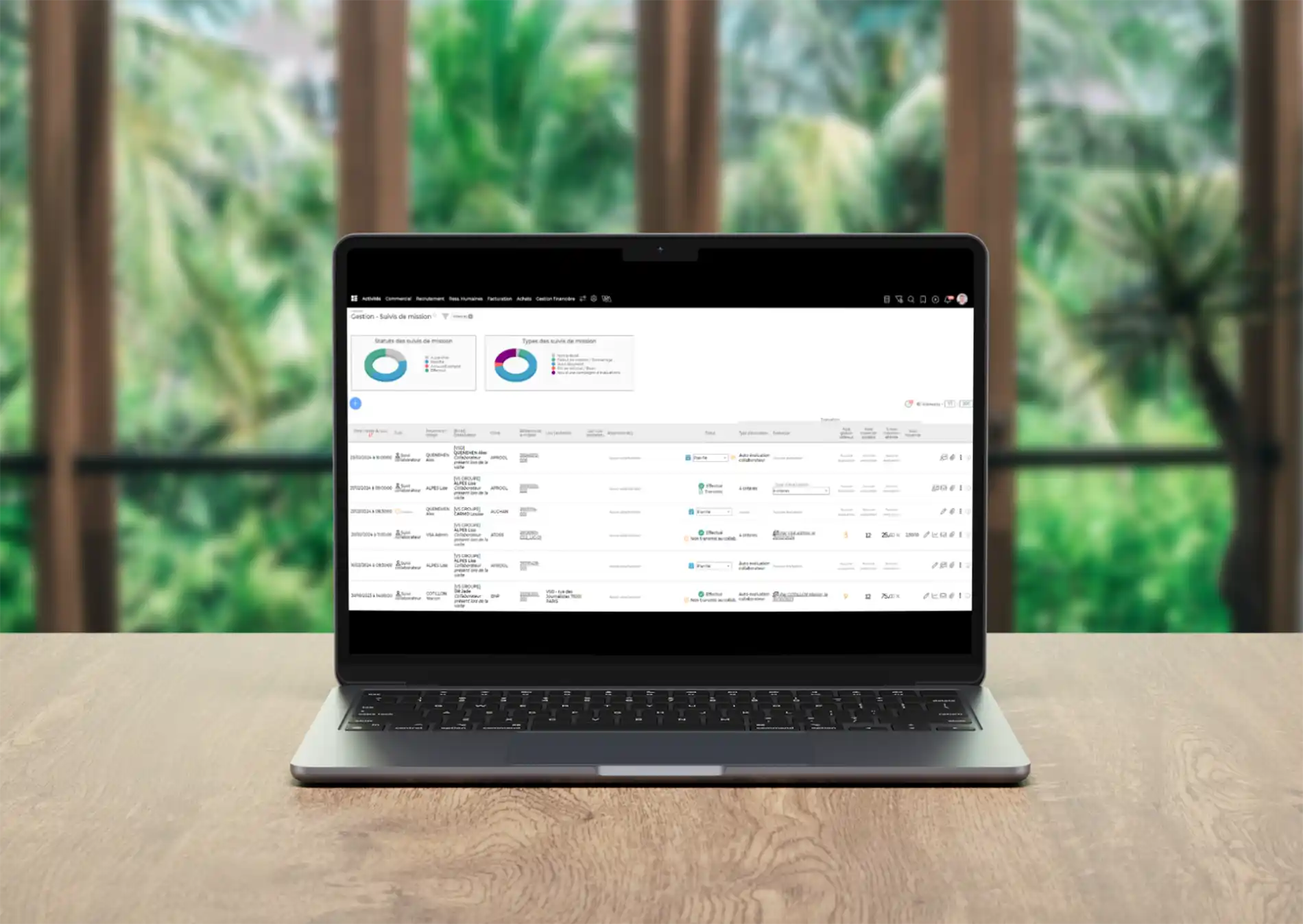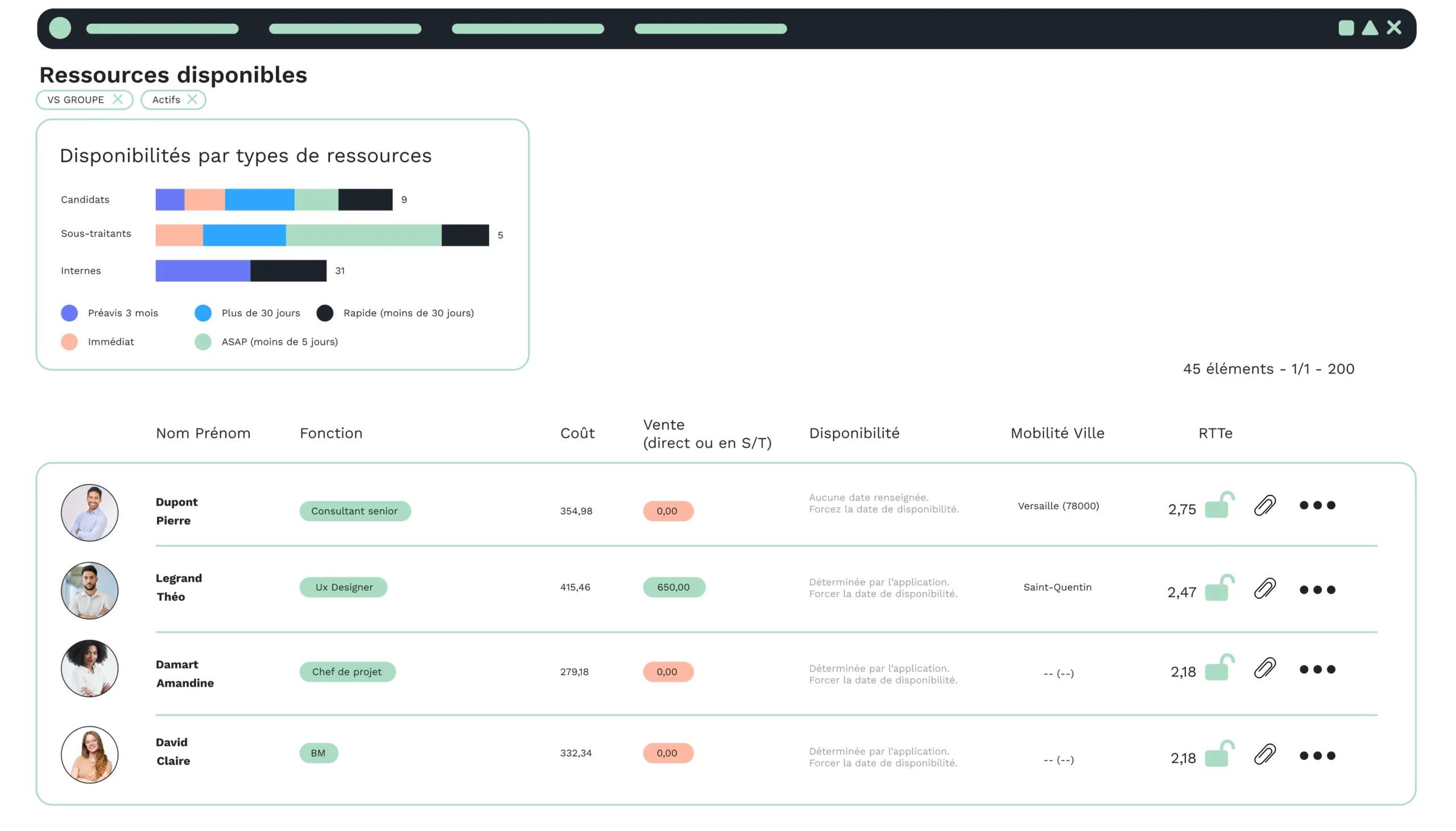Failure to implement an ERP system can cost millions of euros. A case in point is Lidl, which spent 500 million euros on an ERP project that ultimately failed.
What are the mistakes to avoid when implementing ERP in a company? What are the best practices for avoiding failure? This article gives you 12 mistakes to avoid if you don’t want to fail with your ERP implementation, as well as 9 best practices for a successful ERP project.
12 mistakes not to make when implementing an ERP system
Not having clear, precise objectives
When you decide to implement ERP or any other software, you need to set objectives to give meaning and value to the project, and to choose the most appropriate software.
Objectives must be clear and precise. This could mean, for example, reducing the time spent on invoicing by 10%, reducing unpaid invoices by 15%, improving communication with employees, etc. As you can see, you need to be able to measure the extent to which you’ve achieved your objectives.
No strategy
The implementation of an ERP system will affect a large part of the company and its processes.
You need to take into account your company’s operations and business continuity, so that the project can be carried out without jeopardizing the business.
How long? Who runs the project? What software is already in place? What are the company’s strengths and weaknesses? Etc.
Not involving key employees
To implement your strategy, you need to involve the project’s key collaborators. They’ll be in a better position to tell you what would work in their department, what their strengths and weaknesses are.
They also know their teams better, so they can identify employees who may be resistant to change, or who may need extra support. What’s more, involving leaders is a source of motivation.
Underestimating your budget
Involving key collaborators is also necessary to define the functionalities you need and establish a budget for your project.
On the one hand, this will enable you to see if you have the capacity for the project initially imagined, or if you need to readjust certain elements. On the other hand, you’ll avoid spending money only to end up not completing the project.
Opt for an on-Premise solution without the resources
If you want to implement an On-Premise ERP system, that’s your choice. However, you need to think about the resources (human and material) you’ll need to maintain it, and include this in the project budget.
Why not weigh up the pros and cons of an On-Premise solution versus a SaaS solution? Based on the results of your search, you’ll be able to determine whether or not your company is ready for on-Premise, or whether it would be advantageous to switch to SaaS.
Not thinking about long-term needs
Your company is evolving: business development, takeover, recruitment, to name but a few examples. As a result, the ERP that supports your production processes must be able to evolve with your business.
It would be a shame to have to spend yet more time and money implementing a new ERP system. So you need to identify an ERP system that can keep pace with your company’s evolution.
Take features you don’t need
Having too many unused functions makes the software more complex to use, and can lead to reluctance to use it. The objectives you have clearly defined beforehand should help you identify the features you need.
Not upgrading your processes
An ERP project is an opportunity to review and improve your processes. It would be a mistake to keep your old practices and only apply them to an ERP.
Why? because if your processes weren’t optimized, having an ERP wouldn’t change anything, other than making an unsuitable process faster.
Failure to implement change management
Don’t underestimate the impact that reluctant collaborators can have on your project. Indeed, this could lead to a drop in performance and thus have an impact on the company’s business.
No training
Implementing new software means training the employees who will be at the heart of the new tool’s success. The more they master it, the more you’ll see the benefits.
On the other hand, not investing in training could cost you more money than the training itself. On the one hand, because your employees won’t know how to use the software and therefore won’t be able to benefit from the advantages the solution brings; and on the other hand, you’ll have wasted money investing in a project and are losing money because your employees are losing performance.
Putting the wrong people on the project
To ensure success, you need to get the right people involved in your ERP implementation project. This person must have the ability to manage a project of this scale, with the difficulties that go with it (dealing with the unexpected, managing change, etc.).
Under-testing the solution
To find out whether the software meets your expectations, and is adapted to your company’s processes, you need to test it thoroughly.
To do this, you can set up scenarios to see how the solution reacts.
Setting up an ERP system is a big project that needs to be prepared. Going in blind will cost you a lot of money. Here are the best practices for a successful ERP project.
9 best practices for successful ERP implementation
Take stock of your business
Identify your strengths and weaknesses, software already implemented, processes, IT-savvy staff and those who need training, etc.
Based on this information, you’ll be able to draw up the project specifications. The more precise they are, the better you’ll be able to identify your needs.
Define clear objectives
Define the objectives to be met by the project and set up the KPIs to measure them.
This will enable you to measure the success of your implementation. Have you reduced your unpaid bills? Is your billing process faster? Etc.
Sorting through your data
Take advantage of data recovery to identify relevant data and get back on track for more reliable reporting, enabling you to make decisions for the growth of your business.
Putting the right person on the project
This person must not only master the subject matter, but also understand how the company works, how to deal with unforeseen circumstances, how to cope with difficulties; in short, he or she must have the shoulders to manage the project. This person must be able to commit 100% to the project.
Choosing the right supplier
Your choice of supplier will also have an impact on the success of your project. He or she must be able to support and advise you. It must be able to offer you services to deploy its solution in your company (training, support, etc.).
Have a good plan of action
Prepare your action plan well: the better you prepare it, the better you’ll be able to cope with difficulties, and even anticipate certain problems.
Establishing good communication
Change is frightening, even stressful. You need to support your employees by communicating with them.
Be patient
ERP implementation takes several months: you need to be patient and accept that a few unforeseen events may occur.
Ensure that the solution is interoperable
You probably use other software in your company. So you need to make sure that the new solution will be able to interface with other software if you want to keep some of it.
You now have all you need to successfully implement an ERP system.
Read also







